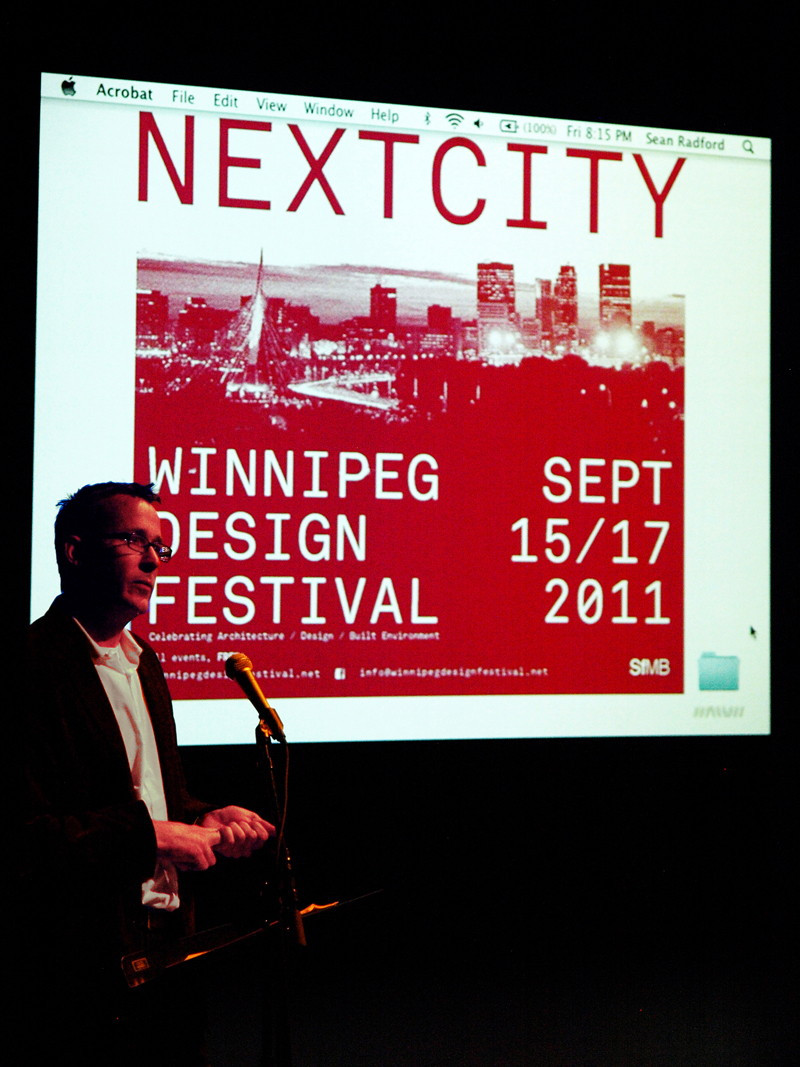Designing the future
Intellectuals, entrepreneurs discuss the future of Winnipeg
On a fall night in Osborne Village, a mob of nearly 300 people squeezed into a capacity-filled Gas Station Arts Centre to hear policy wonks and urban nerds talk about the future of downtown Winnipeg.
On Sept. 16, local architectural interns Melissa McAlister and Sean Radford, in conjunction with Storefront Manitoba, hosted Next City Talks, an event featuring 10 rapid-fire presentations about how to build, design and ultimately improve our city.
“We’re looking into a bigger venue for next year,” said McAlister, an architectural intern at Prairie Architects, explaining that several people were turned away at the door.
The spontaneity and openness of the presentations, where each lecturer was given vague instructions to discuss their ideal “next city,” helped make the event a massive success, she said.
“We really had no idea what people were going to talk about.”
The hasty format of the presentations, called pecha kucha, was first introduced by two architects in Tokyo. It forces speakers to succinctly communicate complex thoughts and ideas by imposing 20 slides, with 20 seconds to speak per slide, and a total lecture time of six minutes and 40 seconds.
When adapted to the Winnipeg context, the format provided visual flair and a sense of urgency to the overarching theme.
“The idea behind the festival was to capitalize on the energy we feel that is in the city,” said McAlister, adding the choice of presenters was a reflection of that energy.
The 10 lecturers included intellectuals and entrepreneurs as diverse as local blogger Robert Galston, interior designer Jason Kasper and Jack Jonasson, the manager of the Lo Pub and Bistro on Ellice Avenue.
“Our city, for the population base, is so incredibly spread out … there’s a giant hole in the middle of the city,” said Jonasson, explaining the importance of the Lo Pub and Bistro, and small businesses more generally, in attracting people downtown.
In his lecture, Jonasson presented his vision for the Lo Pub and Bistro, which took shape during his time in culture-rich Europe, as a gathering place for musicians, back-packers and students.
“In order for the city of Winnipeg to become what it should be, that hole that’s sitting in the middle of the city, the downtown, has to be something that not only government tries to invest in and developers invest in, but something that people invest in.”
Nils Vik, the owner of Parlour Coffee on Main Street, bolstered Jonasson’s point by emphasizing the importance of small business in fashioning a genuinely unique city.
For Vik, creating vibrant, niche market businesses is only possible if we make smaller commercial space available for fledgling entrepreneurs.
Right now, small business owners can easily find 10,000 square feet of extremely expensive rental space, but are at a loss to find small, cheap space for rent, Vik stated in his presentation.
Finding 100 to 200 square feet of commercial space, which is readily available in big Canadian cities like Montreal, is impossible in Winnipeg, he added.
Evan Marnoch, a graphic designer at Winnipeg’s Urban Ink who attended the event, agrees.
“A larger change is more doable on a smaller scale,” he said, adding that government can play a role in facilitating small-scale development.
Another presentation, by sociologist Sonia Bookman, explored the concept of urban branding, claiming that the Exchange District Business Improvement Zone has been heavy handed in it’s management of public space in order to carve out an economic brand that will attract money and investment to the area.
For local activist David Jacks, who has organized a loose coalition of people willing to play badminton in downtown surface parking lots, the idea of seizing public space resonated.
“We need more high-end condos, but at the same time we need to leave the area to the people who have made it their own,” he said.
Published in Volume 66, Number 4 of The Uniter (September 22, 2011)







